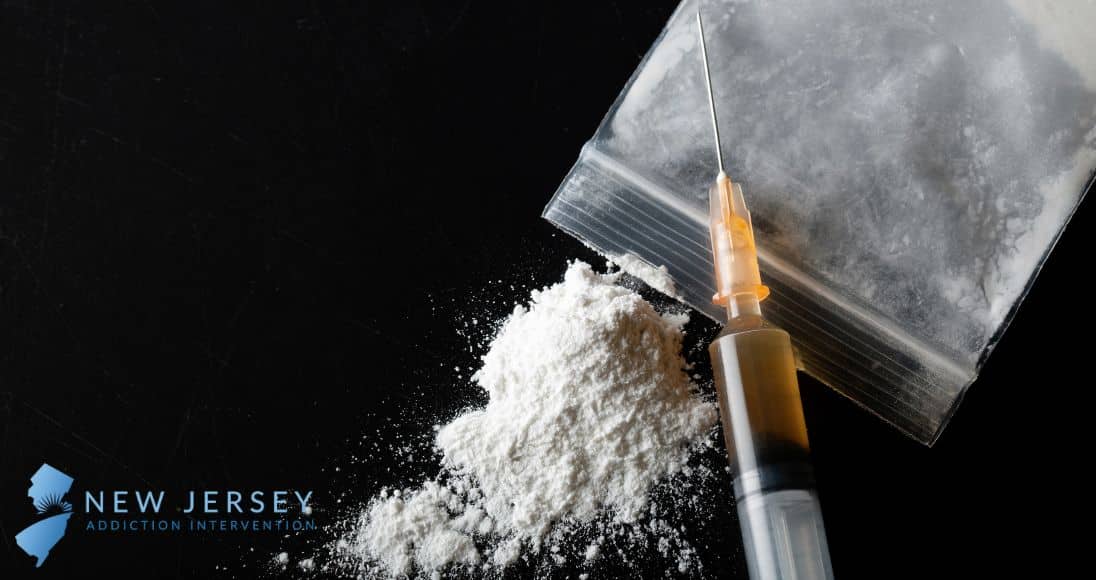Heroin is a highly addictive illicit opioid that is derived from morphine, a chemical found in the seed pod of the opium poppy plant. Heroin is a Schedule I Controlled substance, indicating a high risk for abuse and dependence with no accepted medical use. Still, about 1.1 million people use heroin each year and 1.0 million are addicted to it.[1]
As an illicit drug, heroin takes many different forms.
What Does Heroin Look Like?
Heroin usually comes in the form of a powder or a solid tar-like substance. However, its appearance can vary greatly. It can be difficult to identify heroin just by looking at it, as other substances can have similar appearances. As a result, the only way to know for sure if a drug is heroin is to have it professionally tested.
The most common types of heroin are:
Powdered Heroin
Heroin’s most common form is a powder. Powdered heroin can come in almost any color depending on the cutting agent used, but most batches are either white, off-white, or brown.
White Powder
One of the most common forms of heroin is a fine white powder. This powder is the result of processing pure heroin into a water-soluble form, making it suitable for injection, snorting, or smoking. Its appearance can easily be mistaken for other powdered substances like cocaine or fentanyl.
Powdered heroin can be a bright white color or it can be an off-white color. Sometimes it may have a yellow or pinkish tint.
Brown Powder
Heroin in brown powder form is typically less refined than white powdered heroin. Its color can vary, ranging from light tan to a darker shade of brown. The powder’s consistency may be slightly coarser, but it shares similar use methods as white powder heroin.
Sometimes, dealers mix brown powder with cocaine to give it a whiter appearance, making it more appealing to some users.
Black Tar Heroin
As the name suggests, black tar heroin has a sticky, tar-like consistency. Black tar heroin is sometimes called “Mexican Black Tar Heroin” because it is a major import for Mexican cartels. It’s typically dark brown or black, resembling a thick substance similar to roofing tar. This form of heroin is commonly associated with the West Coast and Canada and is often found in areas where white or brown powder heroin is less prevalent.
There is a misconception that black tar heroin isn’t as pure or as strong as powdered heroin, however, black tar heroin can be just as strong as other forms of heroin.
Synthetic Heroin
In recent years, synthetic opioids, designed to mimic the effects of natural opioids like heroin, have emerged. These synthetic substances may not resemble traditional heroin, both in appearance and effects. Their chemical composition may vary significantly, posing additional risks due to the unpredictability of their potency and potential short and long-term side effects. Some types of synthetic heroin can be stronger than the real thing.
Heroin Pills
Although less common than other forms of heroin, there have been instances of the drug being pressed into pill form. These pills can be mistaken for prescription medications or other illicit drugs. For example, heroin can be pressed into a pill that resembles a prescription opioid like OxyContin.
Cutting Agents May Alter the Appearance of Heroin
Heroin is often mixed with various cutting agents to increase profits or alter its effects. These cutting agents can significantly change the drug’s appearance, making it even more challenging to identify. Common cutting agents include:
- Flour
- Powdered milk
- Baking soda
- Caffeine
- Talcum powder
- Sugar
- Starch
- Over-the-counter painkillers such as paracetamol and Tylenol PM
- Vitamins
- Rat poison
- Cocaine
- Fentanyl
Some of these cutting agents are more dangerous than others, but none of them are intended to be smoked, snorted, or injected. For example, some substances don’t dissolve completely in a liquid solution, and when they are injected the particles can build up and block arteries. This can result in serious cardiovascular events including heart attacks, blockages, and liver damage.
Paraphernalia Used by Heroin Users
If you’re concerned that a loved one is using heroin, it can be helpful to know how to identify heroin-related paraphernalia.
People who inject heroin may use syringes or needles as well as spoons with residue on them, cotton filters, and lighters. People who snort heroin may have a sharp razor blade and a short straw or bills with residue on them. Lastly, people who smoke heroin may use aluminum foil and lighters, with used foil appearing burnt and containing brown residue.
Get Help for Heroin Abuse and Addiction
Heroin abuse and addiction are serious medical concerns that require professional addiction treatment. If you or someone you know is struggling with heroin addiction, we want you to know that there is help available. Rehabilitation programs, counseling, and support groups are available to assist individuals in overcoming addiction and reclaiming their lives–and our team at New Jersey Interventions can connect you with the right heroin addiction treatment program for you.
Don’t wait any longer. Call today to speak with an admissions counselor.
References:
- National Institute on Drug Abuse (NIDA): What is the scope of heroin use in the United States? Retrieved August 2023 from https://nida.nih.gov/publications/research-reports/heroin/scope-heroin-use-in-united-states
- National Institute on Drug Abuse (NIDA): Heroin, Retrieved August 2023 from https://nida.nih.gov/research-topics/heroin
- United States Drug Enforcement Administration (DEA): Heroin, Retrieved August 2023 from https://www.dea.gov/factsheets/heroin
- National Library of Medicine: The Textures of Heroin: User Perspectives on “Black Tar” and Powder Heroin in Two US Cities, Retrieved August 2023 from https://www.ncbi.nlm.nih.gov/pmc/articles/PMC5027195/
Medically Reviewed: August 11, 2023

All of the information on this page has been reviewed and verified by a certified addiction professional.

